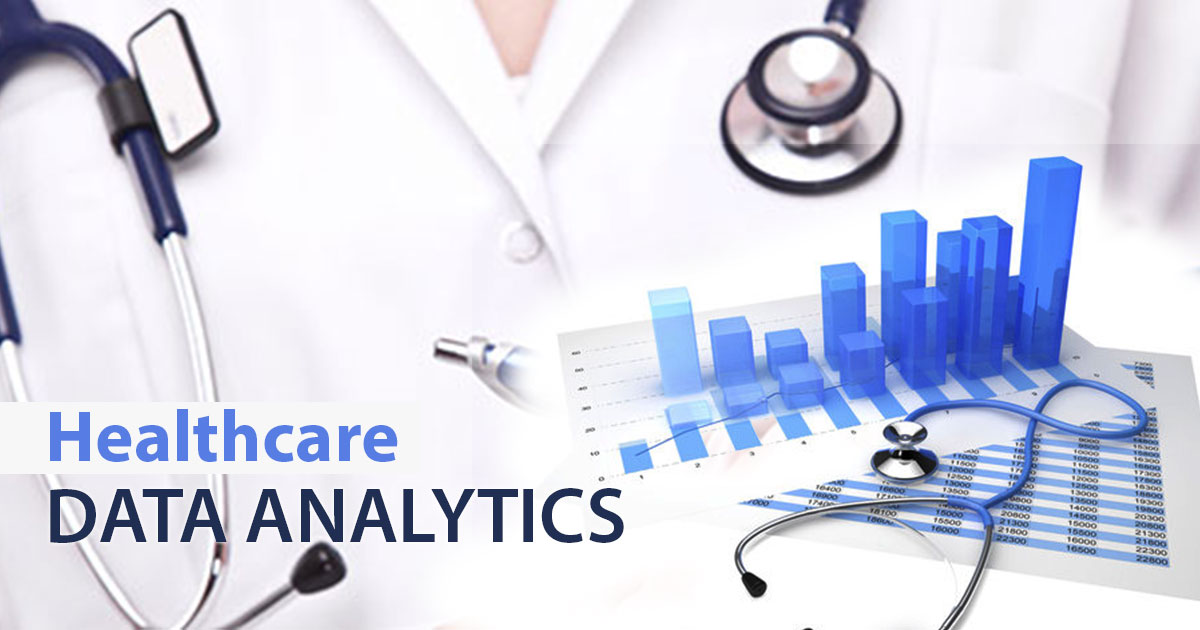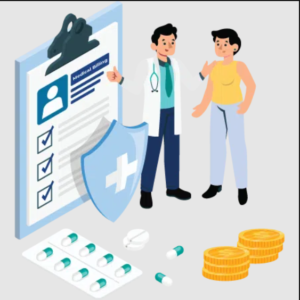In the rapidly evolving landscape of healthcare, data analytics for healthcare has emerged as a powerful tool for driving improvements in patient care, operational efficiency, and cost-effectiveness. This blog explores the transformative potential of data analytics in healthcare and highlights key strategies for its effective implementation.
What is Data Analytics For Healthcare?
Data analytics for healthcare refers to the systematic process of collecting, processing, and analyzing healthcare-related data to derive valuable insights and make informed decisions. In the context of healthcare, this data can include patient medical records, billing information, clinical data, administrative records, and more.
Data analytics in healthcare is used to improve patient outcomes, enhance operational efficiency, control costs, and advance medical research. By employing various techniques, such as predictive analytics, real-time monitoring, and population health management, healthcare organizations can uncover patterns, trends, and correlations within the data, ultimately leading to better healthcare delivery, personalized treatment plans, and the ability to address public health challenges effectively.
This data-driven approach is essential for driving innovation and continuous improvement in the healthcare sector.
Reporting and Automation for Healthcare:
Reporting and automation play a pivotal role in data analytics for healthcare. These two components streamline data-driven decision-making processes and enhance the overall effectiveness of healthcare organizations. Automated data collection, processing, and reporting tools can significantly reduce manual efforts, improve data accuracy, and allow healthcare professionals to focus on patient care and strategic decision-making.
Moreover, the ability to generate real-time and on-demand reports provides critical insights into patient outcomes, operational performance, and financial management. This facilitates timely interventions, cost control, and quality improvements, ensuring that healthcare providers can deliver the best possible care to patients while optimizing resource allocation.

These are the most effective 10 reasons that you should follow as mentioned below:
1. Data Collection and Integration: One of the fundamental steps in leveraging data analytics for healthcare improvement is the collection and integration of data from various sources. Healthcare organizations generate vast amounts of data, including electronic health records (EHRs), medical imaging, billing information, and patient feedback. To harness the full potential of this data, it is crucial to have robust systems in place for data collection and integration. Health Information Exchanges (HIEs) and interoperable EHR systems are essential components of this process.
2. Predictive Analytics: Predictive analytics is a vital aspect of healthcare improvement. By analyzing historical data, it can help predict disease outbreaks, patient readmissions, and even individual patient health outcomes. For example, predictive analytics can help identify high-risk patients and enable proactive interventions to prevent hospital admissions. This not only improves patient outcomes but also reduces healthcare costs.
3. Real-time Monitoring: Real-time monitoring using data analytics can transform the way healthcare is delivered. With the advent of wearable devices and IoT (Internet of Things) technologies, healthcare providers can continuously monitor patients’ vital signs, making early detection of health issues possible. This real-time data helps in prompt decision-making and provides timely interventions, ultimately leading to better patient care.
4. Population Health Management: Data analytics plays a crucial role in population health management. By analyzing data at the population level, healthcare organizations can identify trends, allocate resources efficiently, and develop targeted interventions. This is particularly important for addressing chronic diseases and promoting preventive care, which can significantly reduce the burden on the healthcare system.
5. Personalized Medicine: One of the most exciting developments in healthcare is the concept of personalized medicine. Data analytics allows healthcare providers to tailor treatment plans based on an individual’s genetic makeup, lifestyle, and medical history. This precision medicine approach can lead to more effective treatments with fewer side effects, ultimately improving patient outcomes.
6. Fraud Detection and Cost Control: In addition to enhancing patient care, data analytics can also be used to tackle fraud and control costs. By analyzing billing data and claims, healthcare organizations can identify irregularities and potential cases of fraud. Moreover, analytics can help optimize resource allocation, reduce waste, and improve the overall cost-effectiveness of healthcare delivery.
7. Enhanced Decision Support: Data analytics tools can provide healthcare professionals with valuable insights to support clinical decision-making. With access to comprehensive patient data and evidence-based recommendations, physicians can make more informed choices about treatment plans, leading to better patient outcomes. Furthermore, these tools can help reduce medical errors and improve the overall quality of care.
8. Data Security and Privacy: While data analytics offers immense potential, it also raises concerns about data security and patient privacy. Healthcare organizations must prioritize robust data security measures and adhere to strict privacy regulations, such as the Health Insurance Portability and Accountability Act (HIPAA) in the United States. Protecting patient data is not only an ethical obligation but also a legal requirement.
9. Data Literacy and Training: To fully leverage data analytics for healthcare improvement, healthcare professionals must be trained in data analysis and interpretation. Investing in the education and development of data analytics skills among medical staff is essential to ensure that the insights generated from data are put to practical use.
10. Collaborative Approach: Finally, it’s crucial for healthcare organizations to foster a culture of collaboration. Cross-functional teams that include data scientists, clinicians, administrators, and IT experts can work together to develop and implement data-driven solutions. A collaborative approach ensures that data analytics initiatives align with the organization’s overall healthcare improvement goals.
Conclusion:
Data analytics has the potential to revolutionize healthcare by enhancing patient care, optimizing operations, and controlling costs. By collecting and integrating data, utilizing predictive analytics, embracing real-time monitoring, and focusing on population health management and personalized medicine, healthcare organizations can deliver more effective and efficient care. However, data security, privacy, and the need for data literacy and training should not be overlooked. To succeed, healthcare organizations must embrace a collaborative approach that brings together diverse expertise to harness the power of data analytics for healthcare improvement.








